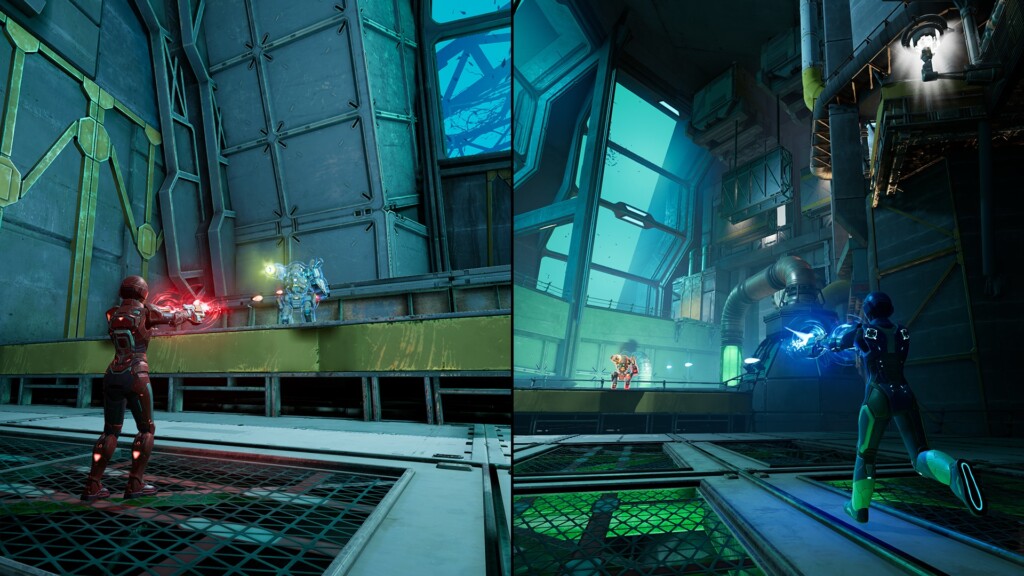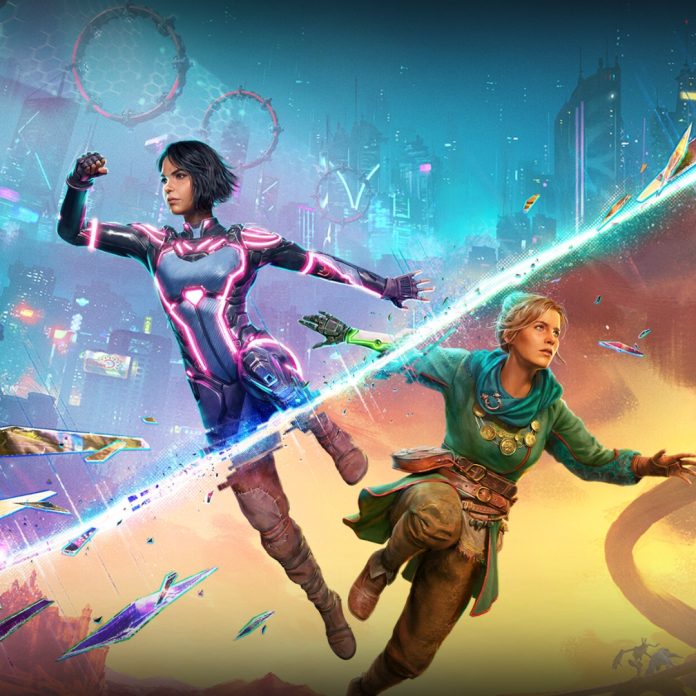Split Fiction doesn’t just move at a clip. It blazes like Tom Cruise sprinting across the rooftops of London.
I’m not sure I’ve ever experienced an hour of video game action as whirldwind as Split Fiction’s first act, which hurls ideas and concepts at the player like a kid breathlessly explaining what they got up to over the holidays.
Split Fiction has already been optioned for a movie, and that opening perfectly demonstrates why. The game is practically storyboarded for cinema, with two mismatched protagonists – Mio and Zoe – thrown together in a high-stakes caper across a series of varied fantasy and sci-fi locales, and across more action set pieces than all eight Mission: Impossible films combined.
It’s a long way from the gentle fairy tale of Brothers: A Tale of Two Sons, the game which introduced me to the talents of designer Josef Fares. That game was an affecting adventure built around the mechanic of controlling two distinct characters on one controller. It was charming, spooky, and heartbreaking, but ultimately quite sedate despite its innovative controls.
Since then, Fares and his new studio, Hazelight, have leaned into dual-protagonist mechanics, making a second player a compulsory part of the experience with hits like A Way Out and It Takes Two. Each game has seen the idea of co-operative gameplay evolve and refine.
I passed on both of those, in part due to subject matter or settings that didn’t appeal, but also due to some increasingly performative media appearances, which left me with a persistent ick. Still, the Nintendo Switch 2 has arrived, I’m keen for new games to play, and Split Fiction’s technicolor fusion of sci-fi and fantasy is immediately more appealing to me than prison break exploits or a marriage-mending metaphor.

Here, a second player is once again required to enjoy this split screen adventure, either locally or online. Each character typically occupies half of the screen, but the framing and size of the split frequently change, adapting to the gameplay requirements of the moment or shifting for cinematic effect.
The action flits restlessly from moment to moment, pilfering gameplay elements from Assassin’s Creed, Bayonetta, Super Mario Galaxy, Prince of Persia, Gravity Rush, the Zelda series, and so many others as it goes. Split Fiction is deeply afraid of boring its players, but the “Now That’s What I Call Every Game You’ve Ever Played” approach works.
No one sequence is particularly challenging. Two heads are better than one and all that, and Hazelight balances making each set piece require just enough discussion and collaboration to figure out and execute a solution, whether it’s throwing apples to distract trolls, bending gravity in a freeway chase in the sky, or morph-balling through a pinball-like maze. At its best, the game echoes the collaborative to-and-fro perfected by Valve with Portal 2’s co-op mode.

Our two leads are initially quite dislikable, but over time, as they trade barbs, jokes, and confessions, you’ll warm to them just as they warm to each other. The dialogue is generally terrible, but that feels appropriate given the popcorn blockbuster framing. The narrative’s none-too-subtle warnings on the perils of corporations and AI are also on the nose. Thankfully, the creaky script and story are saved by the game’s propulsiveness and overall sense of fun. If you enjoyed the Chris Pine-starring version of Dungeons and Dragons, you’ll likely appreciate the similar energy here.
Mio and Zoe also know when to step back and give players space. Their chatter pauses often enough for players to discuss puzzle solutions or coordinate the actions needed to overcome a boss fight (some of which are extremely frustrating and perhaps the game’s biggest bum note).
I’ve seen some say this is the perfect adventure for video game newcomers, but I’m not so convinced. Split Fiction works so well because it taps into my instinctive and long-earned understanding of how games play and control. I can handle each genre twist or shift in mechanics because I’ve seen it all before, in the dozens of games Split Fiction pays homage to.
By the final chapter, Hazelight lets loose with an ending sequence that brings everything together in a psychedelic blaze that reflects on how we engage with games. But as with Brothers: A Tale of Two Sons, the commentary is expressed through mechanics rather than dialogue, and it’s all the more effective for it.

On Nintendo Switch 2, the game runs, to my eyes, at a steady 30 fps with barely a hiccup, despite having to accommodate two player perspectives and a kaleidoscope of visual peacocking. I’m sure the game looks and runs a little better on more powerful systems, but the Switch 2 experience does not feel compromised.
I should also note that I played through the game with a friend who lives on a different continent. They may be located an ocean away, but we encountered no issues with online play or using the Nintendo Switch 2’s new GameChat feature. Voice quality is clear and lag-free, and the way the game’s sound is automatically dialled down when you’re talking is subtle and non-intrusive.
It’s also worth praising Hazelight for the game’s generous release model. As with It Takes Two and A Way Out, only one player needs to own the game, with your playing companion getting to play for free by downloading the game’s Friend’s Pass from the Nintendo eShop.
Split Fiction’s achievement lies in making what could be a disorienting exercise feel seamless, often thrilling, and occasionally artful. It is an adventure where the highs and stumbles feel richer for being experienced together. And by the time the credits rolled, I admit my misgivings about the developer had vanished, replaced by joy and a shared satisfaction of pulling off the impossible.
Game: Split Fiction
Platform: Nintendo Switch 2 (reviewed), PlayStation 5, Xbox Series X|S
Developer: Hazelight Studios
Publisher: Electronic Arts
Release Date: June 5, 2025
Daniel New
Split Fiction review
Split Fiction
4 5 0 1
Split Fiction is an exuberant, cinematic co-op adventure that thrives on shared moments, scraped victories, and those magic moments when a plan comes together.
Split Fiction is an exuberant, cinematic co-op adventure that thrives on shared moments, scraped victories, and those magic moments when a plan comes together.
